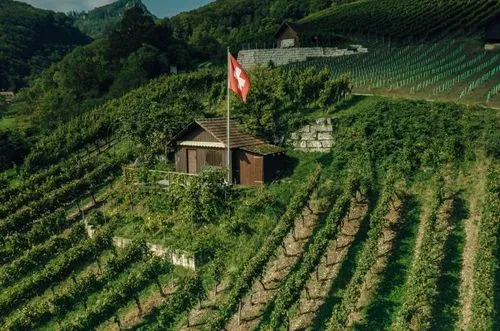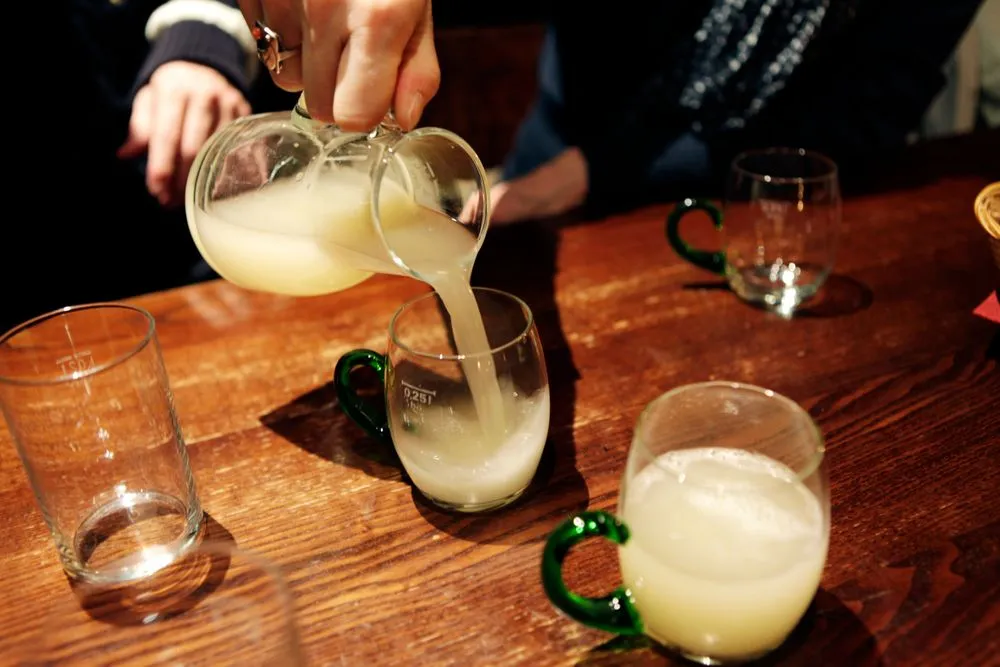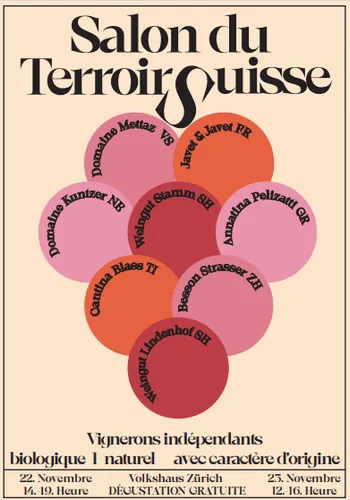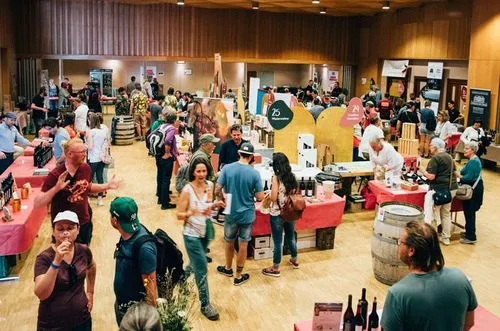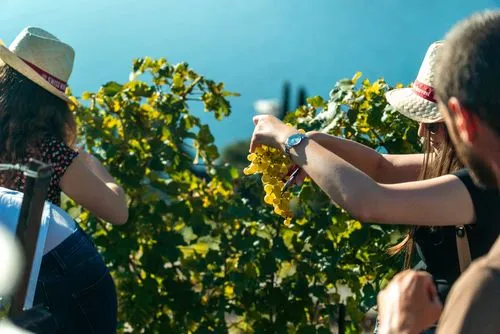From grape juice to Sauser: how the first wine of the year is made
Sauser in brief
Definition: Freshly pressed grape juice that begins to ferment spontaneously.
Names: In Switzerland, ‘Sauser’ or ‘Suuser’; in Germany, “Federweisser”; in western Switzerland, ‘vin bourru’.
Appearance: Cloudy, as it is unfiltered.
Taste: Sweet, fruity, sparkling, slightly yeasty.
Alcohol content: Low, increases continuously during fermentation.
Shelf life: Only a few days to weeks; changes quickly.
Season: Typical autumn drink, available immediately after the harvest.
Sauser or Federweisser?
Fresh, slightly fermenting grape must, which is bottled just a few days after the harvest, is called ‘Sauser’ or ‘Suuser’ in Switzerland. There are regional variations: sometimes it is almost pure grape must, sometimes it is already slightly fermented. The drink is often low in alcohol, sweetish and easy to drink.
The German equivalent is called ‘Federweisser’: a young white wine that is in the middle of fermentation. There is also ‘Federroter’, made from red grape must.
In Switzerland, however, ‘Federweisser’ refers to a young white wine made from red grapes (usually Pinot Noir), also known as Blanc de Noir. It is a fully fermented wine and thus differs from the German Federweisser, which is only half fermented.
How Sauser is made
The production of Sauser is simple yet fascinating. Freshly pressed grape must begins to ferment spontaneously: yeast converts sugar into alcohol and carbon dioxide. Depending on the stage, Sauser tastes sweet and grapey or already sparkling and slightly alcoholic. It is not filtered and therefore remains cloudy – a sign of its freshness. Within a few days, it changes until it eventually becomes young wine. It is precisely this transience that makes it so special.
A drink with a short shelf life
Sauser is a wine for the moment. As fermentation continues, it can only be kept for a few days to weeks. It is often served directly from barrels or freshly bottled and is typically only available in autumn. A bottle in the fridge will hardly last any longer because the carbon dioxide continues to work. So if you want to enjoy Sauser, you have to be quick – it is the opposite of a wine for ageing.
What makes Sauser special
In the glass, Sauser has a milky cloudiness reminiscent of freshly pressed must. Its taste is sweet, fruity and slightly sparkling, and depending on the stage of fermentation, it can also be slightly yeasty.
The alcohol content is low and changes from day to day. This makes it a typical drink for social gatherings in autumn – uncomplicated, fresh and cheerful.
Sauser in the Swiss wine regions
Sauser is part of autumn in all six wine-growing regions of Switzerland. It is often paired with onion or cheese tart. In German-speaking Switzerland, ‘Suuser’ is a popular accompaniment to autumn markets, while in French-speaking Switzerland it is known as ‘vin bourru’ (‘grumpy wine’).
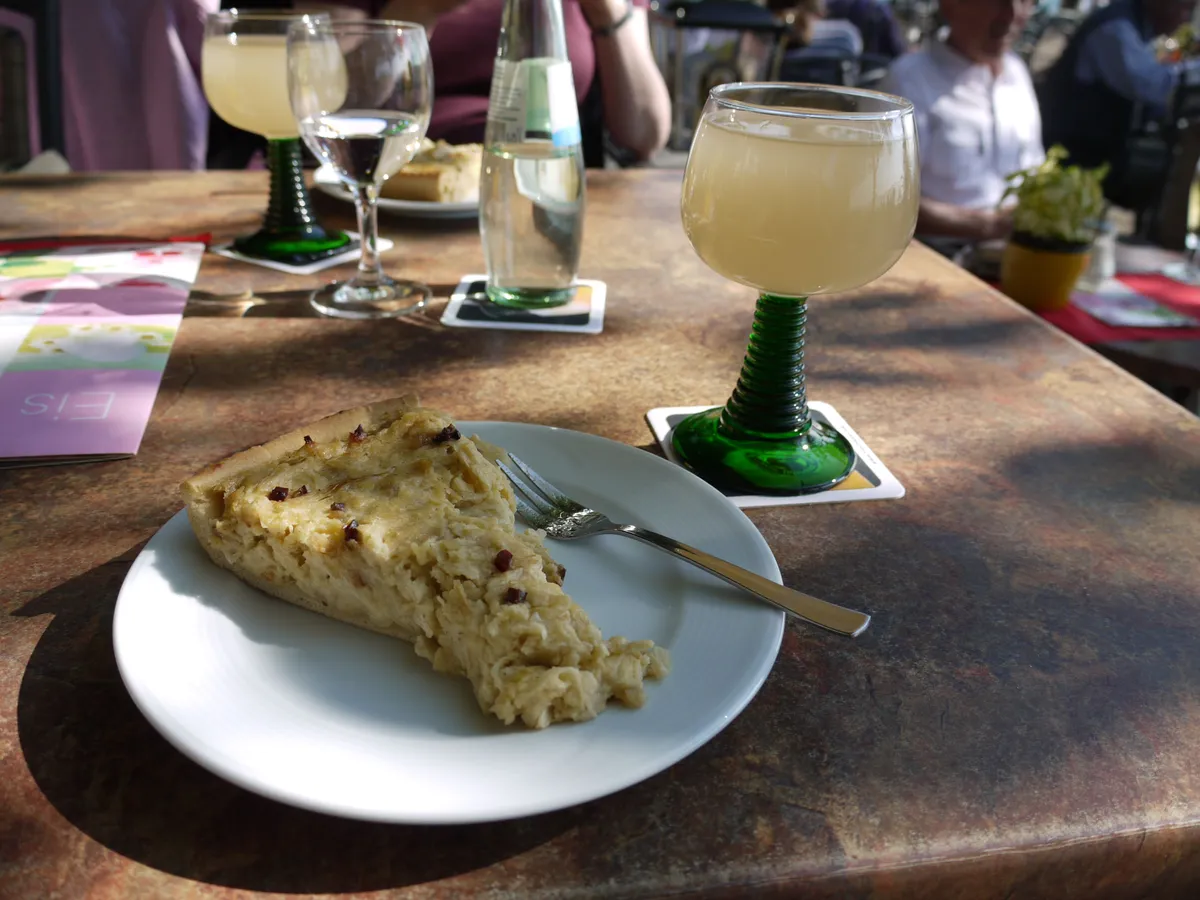
Despite its different names, it unites the country: a drink that marks the transition from grape juice to wine. Those who drink Sauser literally have autumn in Switzerland in their glass: fresh, fleeting and full of tradition.
Related Articles
All the news about Swiss wines and exclusive reports.
To visit our site, you must be of legal drinking age in your country of residence.

